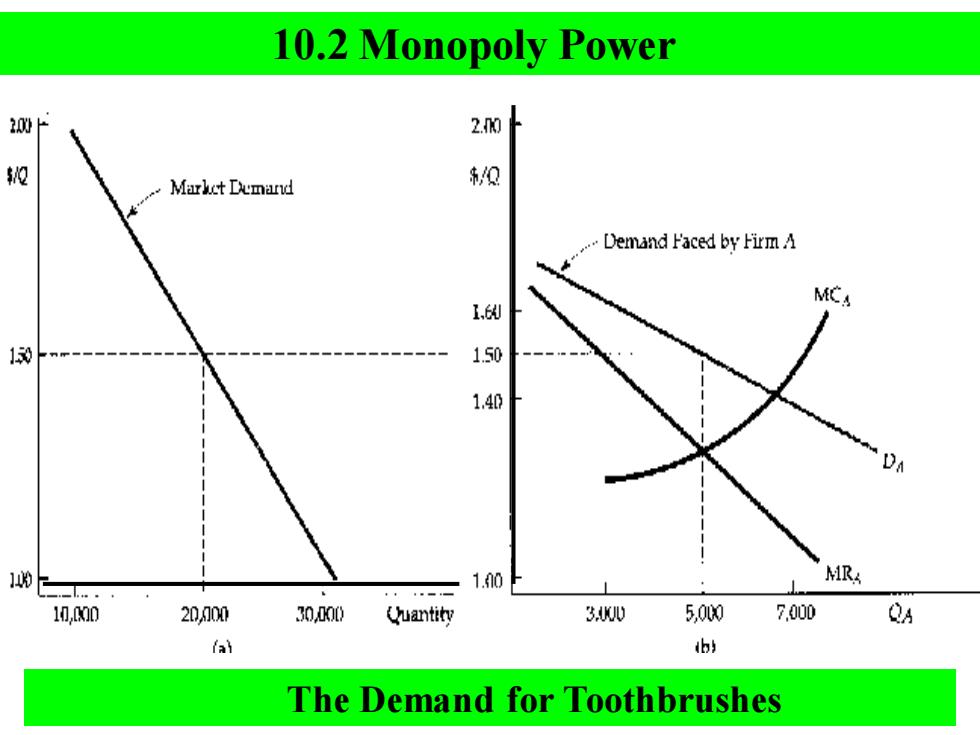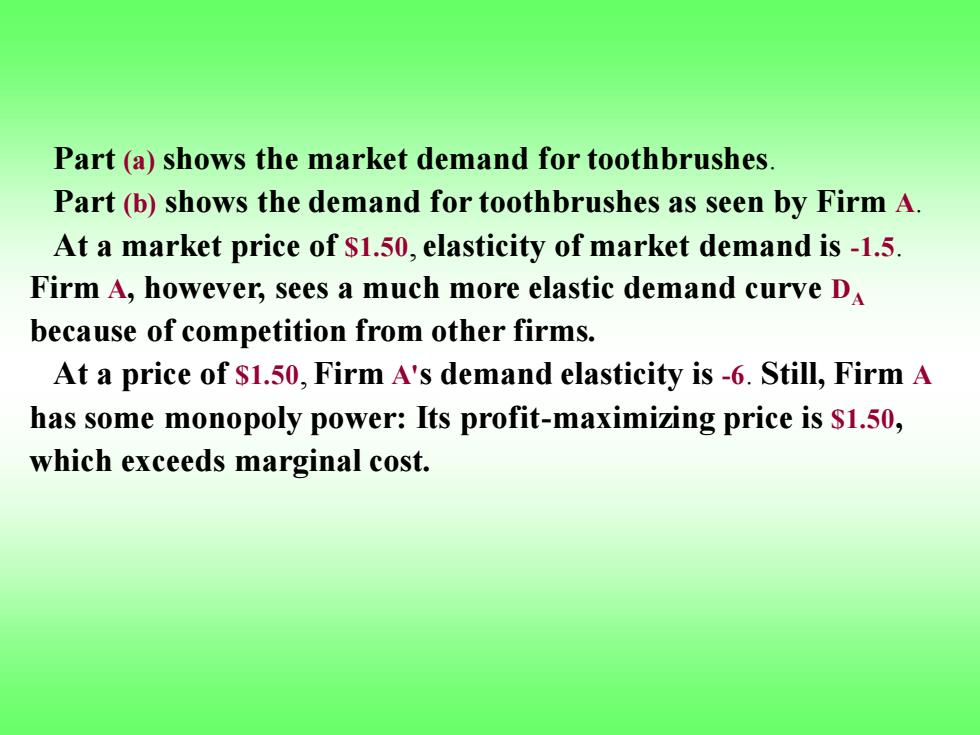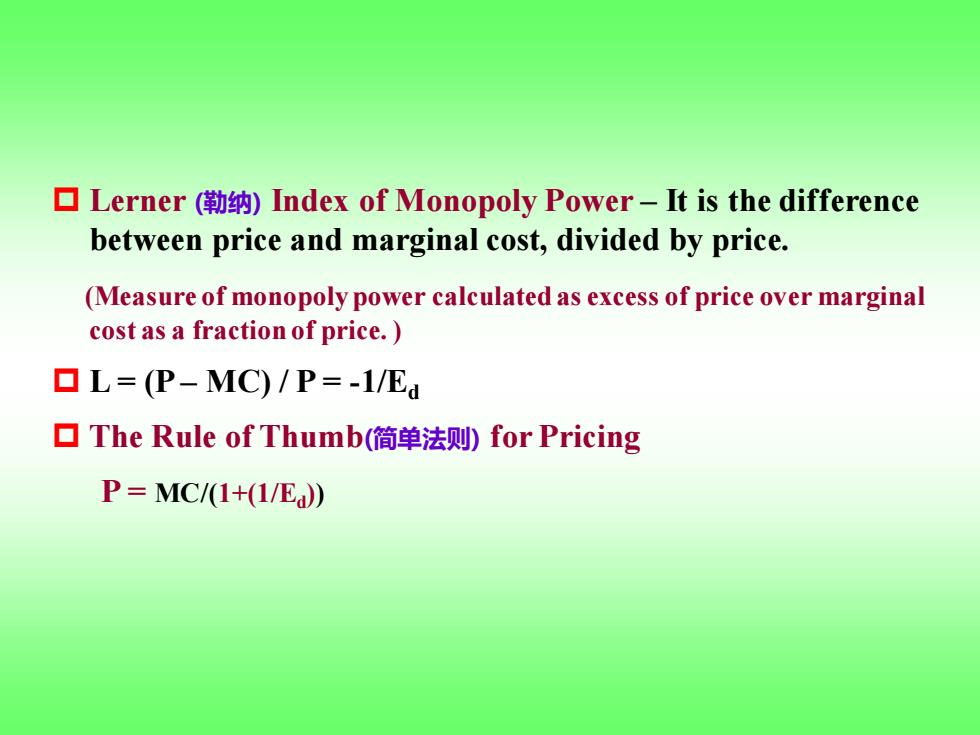
10.2 Monopoly Power 200上 2,M 视 .Markct Demand Q .Demand Faced by Firm A MCA 1,6W 150 1.50 140 DA 1.00F MR 10,00 20M00 30,00 Quantity 3.00 5,000 7.000 A (al b The Demand for Toothbrushes
The Demand for Toothbrushes 10.2 Monopoly Power

Part (a)shows the market demand for toothbrushes. Part (b)shows the demand for toothbrushes as seen by Firm A At a market price of $1.50,elasticity of market demand is -1.5. Firm A,however,sees a much more elastic demand curve D because of competition from other firms. At a price of $1.50,Firm A's demand elasticity is -6.Still,Firm A has some monopoly power:Its profit-maximizing price is $1.50, which exceeds marginal cost
Part (a) shows the market demand for toothbrushes. Part (b) shows the demand for toothbrushes as seen by Firm A. At a market price of $1.50, elasticity of market demand is -1.5. Firm A, however, sees a much more elastic demand curve DA because of competition from other firms. At a price of $1.50, Firm A's demand elasticity is -6. Still, Firm A has some monopoly power: Its profit-maximizing price is $1.50, which exceeds marginal cost

▣Lerner(鳓纳)Index of Monopoly Power-It is the difference between price and marginal cost,divided by price. (Measure of monopoly power calculated as excess of price over marginal cost as a fraction of price. ▣L=(P-MC)/P=-1/Ea ▣The Rule of Thumb(简单法则)for Pricing P=MC/1+(1/Ea)
Lerner (勒纳) Index of Monopoly Power – It is the difference between price and marginal cost, divided by price. (Measure of monopoly power calculated as excess of price over marginal cost as a fraction of price. ) L = (P – MC) / P = -1/Ed The Rule of Thumb(简单法则) for Pricing P = MC/(1+(1/Ed ))